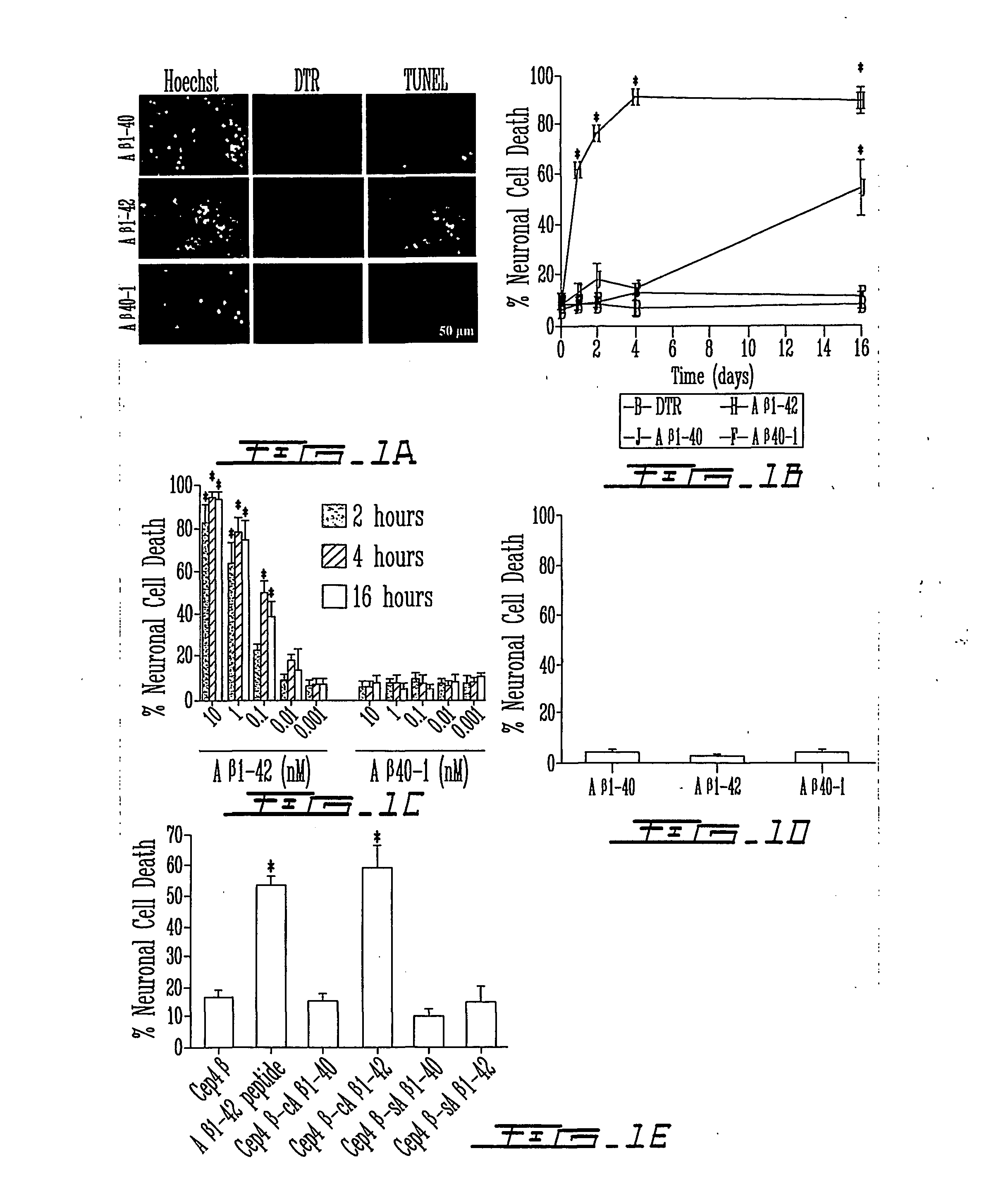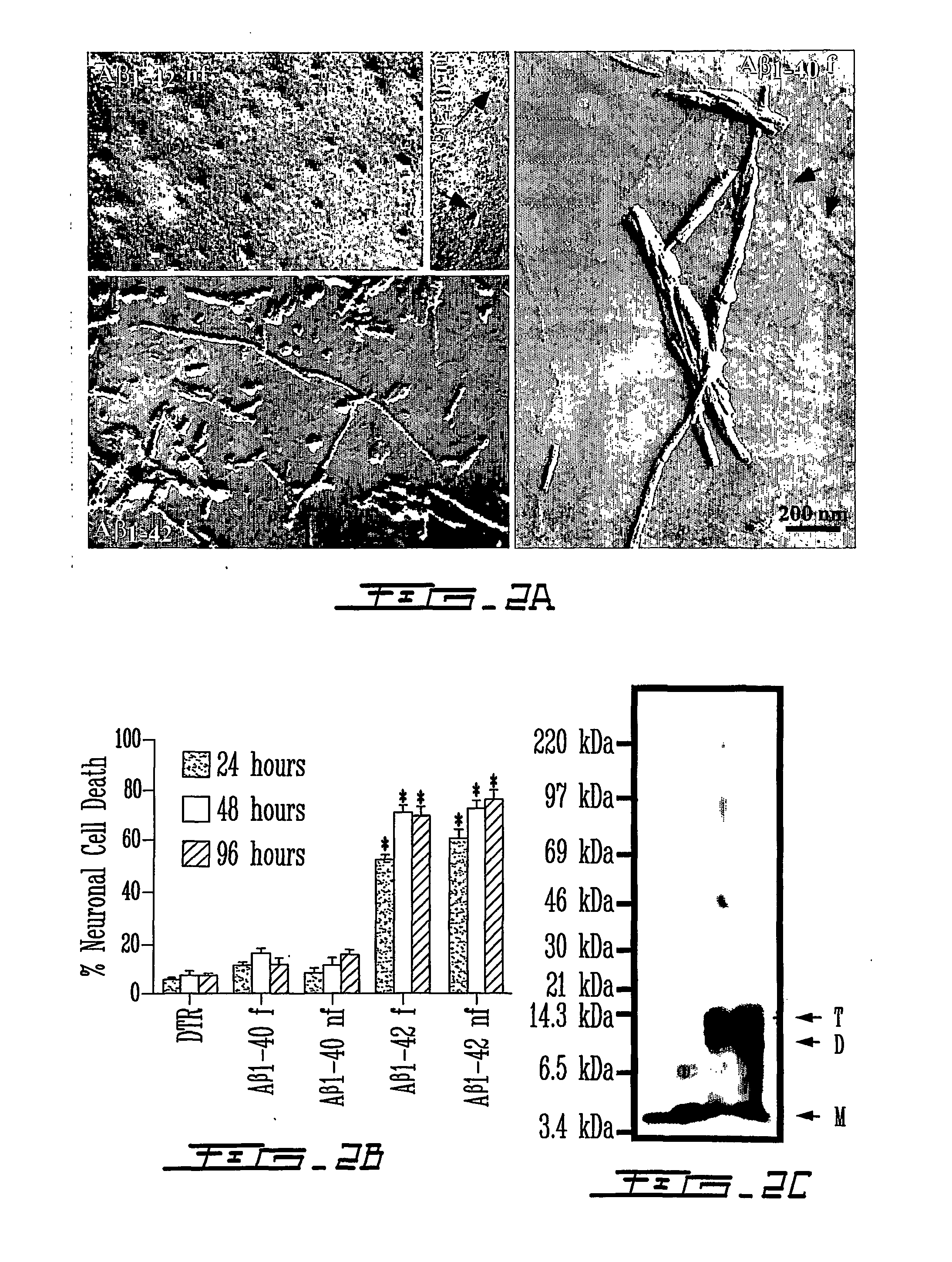Selective inhibition of intracellular amyloid-beta neurotoxicity in human neurons
a neurotoxic and amyloidbeta technology, applied in the direction of tripeptide ingredients, tetrapeptide ingredients, peptide sources, etc., can solve the problem of limited toxicity of a.beta. peptide in cell cultures and brains to high non-physiological doses of peptides
- Summary
- Abstract
- Description
- Claims
- Application Information
AI Technical Summary
Benefits of technology
Problems solved by technology
Method used
Image
Examples
Embodiment Construction
[0148] Considerable attention in the art has been devoted to the toxicity of extracellular amyloid .beta. peptides in Alzheimer's Disease. However, extracellular A.beta., even at high concentrations, does not induce cell death in primary human neuron cultures, in most transgenic animal models with extensive extracellular A.beta. deposits, and weakly correlates with AD. In the present invention, it was found that intracellular forms of A.beta..sub.1-42 are toxic to neurons.
[0149] Microinjection of A.beta..sub.1-42 peptide or cytosolic A.beta..sub.1-42 cDNA-expressing constructs rapidly induces cell death of primary human neurons. In contrast, A.beta..sub.1-40, A.beta..sub.40-1, or A.beta..sub.42-1 peptides, cytosolic A.beta..sub.1-40 or secreted A.beta..sub.1-42 and A.beta..sub.1-40 cDNA expressing constructs were not observed to be toxic. As little as 1 pM concentration or 1500 molecules of A.beta..sub.1-42 peptides is neurotoxic and non-fibrillized peptides are as neurotoxic as fib...
PUM
| Property | Measurement | Unit |
|---|---|---|
| molecular weight | aaaaa | aaaaa |
| volumes | aaaaa | aaaaa |
| volumes | aaaaa | aaaaa |
Abstract
Description
Claims
Application Information
 Login to View More
Login to View More - R&D
- Intellectual Property
- Life Sciences
- Materials
- Tech Scout
- Unparalleled Data Quality
- Higher Quality Content
- 60% Fewer Hallucinations
Browse by: Latest US Patents, China's latest patents, Technical Efficacy Thesaurus, Application Domain, Technology Topic, Popular Technical Reports.
© 2025 PatSnap. All rights reserved.Legal|Privacy policy|Modern Slavery Act Transparency Statement|Sitemap|About US| Contact US: help@patsnap.com



